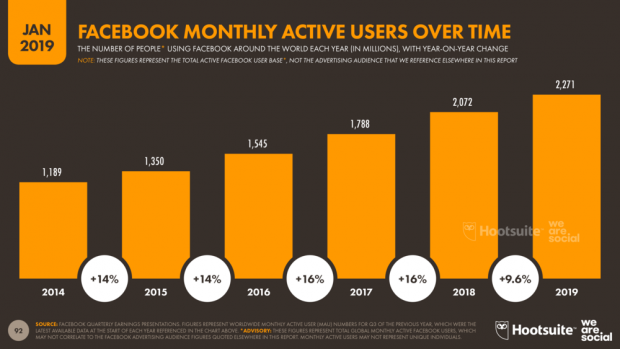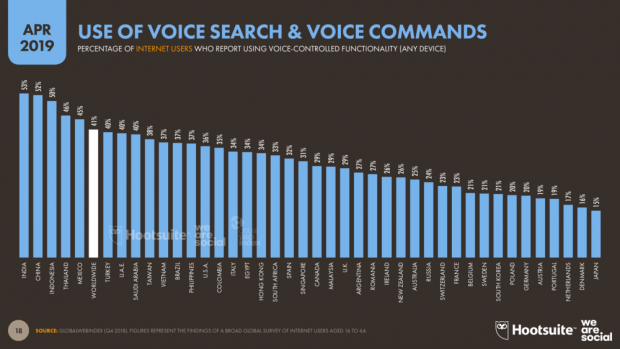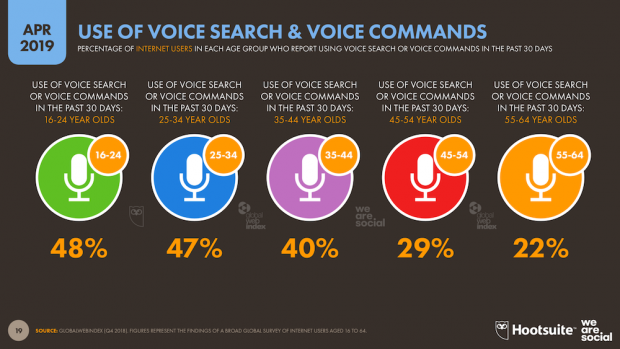For marketers, it’s essential to know apparent shifts in social behavior. After all, when you base your marketing strategy on incorrect assumptions, you will have a hard time meeting your goals. Unluckily, the headlines do not always get it right in terms of analyzing social trends.
Enter Simon Kemp. The founder of marketing technique consultancy Kepios examines the activity behind the headlines. He shares that information in reports produced in collaboration with Hootsuite and We Are Social.
Recently, Kemp shared highlights from his Q2 Digital Statshot at The Next Web’s TNW2019 conference in Amsterdam. Here are 3 ripped-from-the-headlines social trends that Kemp mentions are being reported all wrong.
1. There is no social media apocalypse
Yes, there are actual issues about privacy. Headlines shout about the #DeleteFacebook movement. However, Fb’s user numbers aren’t dropping. Actually, they are rising.
“Last year, Fb still grew 8 %,” Kemp mentioned. “Fb is still rising massively all the time.”
Consider these statistics from Kemp’s Digital 2019 analysis:
- The number of social media users worldwide rose 9 % last year, to 3.48 billion.
- Almost one million people join social media for the first time daily.
- Fb is the third-most visited site—after Google and YouTube.
- Twitter comes in at number 7, and Instagram number 10.
- Fb was the most used app in 2018.
- Fb Messenger was the most downloaded app.
“There is no social media apocalypse,” Kemp mentioned. “Despite concerns about privacy, the everyday person isn’t so concerned that they have stopped utilizing it yet.”
The takeaway
Don’t build your plans round clickbait headlines about people leaving social media in droves.
2. Teens aren’t flocking to Instagram
Yes, teenagers are leaving Fb. However, they aren’t headed to Instagram. Actually, the number of 13- to 17-year-olds is dropping on Instagram, too. So where are they going?
One possible reply is TikTok. (Say what? Take a look at the blog post, What is TikTok.) TikTok does not publish audience numbers in the same method as other social networks. So, Kemp used Google search trends to get a sense of the platform’s popularity. Take a look at this chart displaying comparative searches for Tiktok and Snapchat:
However, TikTok does not totally account for all these teens missing from Instagram. Actually, Kemp says, in Western markets, we might be “previous peak TikTok.” So where have the teens gone?
“They are moving away from social networks altogether and joining communities,” Kemp mentioned. He talked about Discord, a gaming platform that he describes as “a little like Slack however for kids.”
Generally, you could not promote in these communities (but, anyway). So how will you work them into your advertising and marketing technique? The reply is the takeaway for this social pattern.
The takeaway
“Move from interruption to inspiration,” Kemp mentioned. “It’s what the entire influencer movement is built on.”
3. Home assistants don’t lead the way in voice control
The headlines about voice control tend to concentrate on home assistants like Amazon Echo and Google Home. However, Kemp says the real energy of voice control isn’t found in smart speakers in upscale living rooms.
Instead, voice control is most revolutionary in areas of the world where literacy is low. Or, where the local language does not utilize a character alphabet that is conducive to typing. Voice search is used mostly in India, China, and Indonesia at present.
Worldwide, voice is hottest among young people. Almost half of 16- to 24-year-olds have used voice search or voice controls in the last 30 days.
Rising voice use may completely change the way we think about brands, Kemp mentioned. Once you are composing a shopping list by voice, you tend to order by product category (milk, eggs, beer) rather than brand name.
Which means our voice assistants are going to have to select brands for us once we do not specify, utilizing algorithmic selection. Kemp argues that if you understand this change is coming, you could see it as a chance, rather than a threat.
The takeaway
In certain product classes, you are “not going to be advertising and marketing to shoppers anymore,” Kemp mentioned. “You’re going to be advertising and marketing to machines.”
For extra of Simon Kemp’s evaluation of social developments in collaboration with Hootsuite and We Are Social, try his 2019 Global Digital Overview (or the summary here) and his Q2 Global Digital Statshot.





